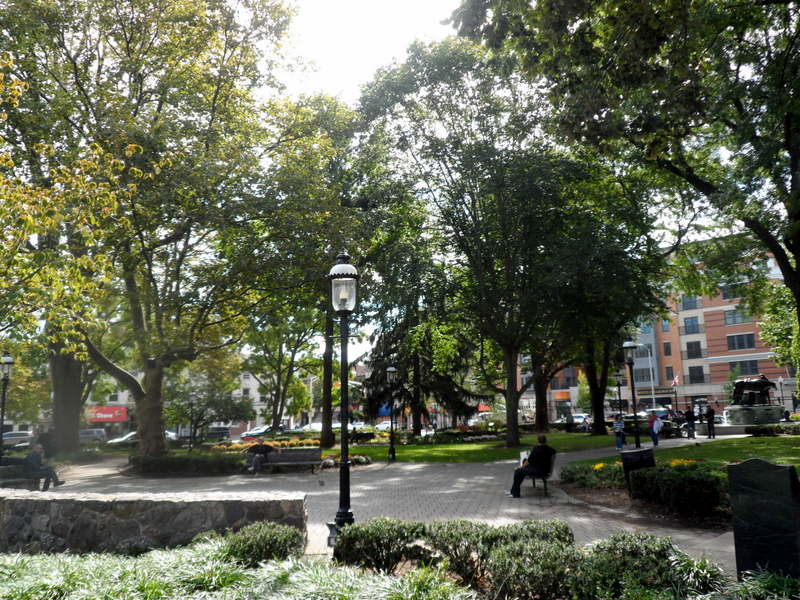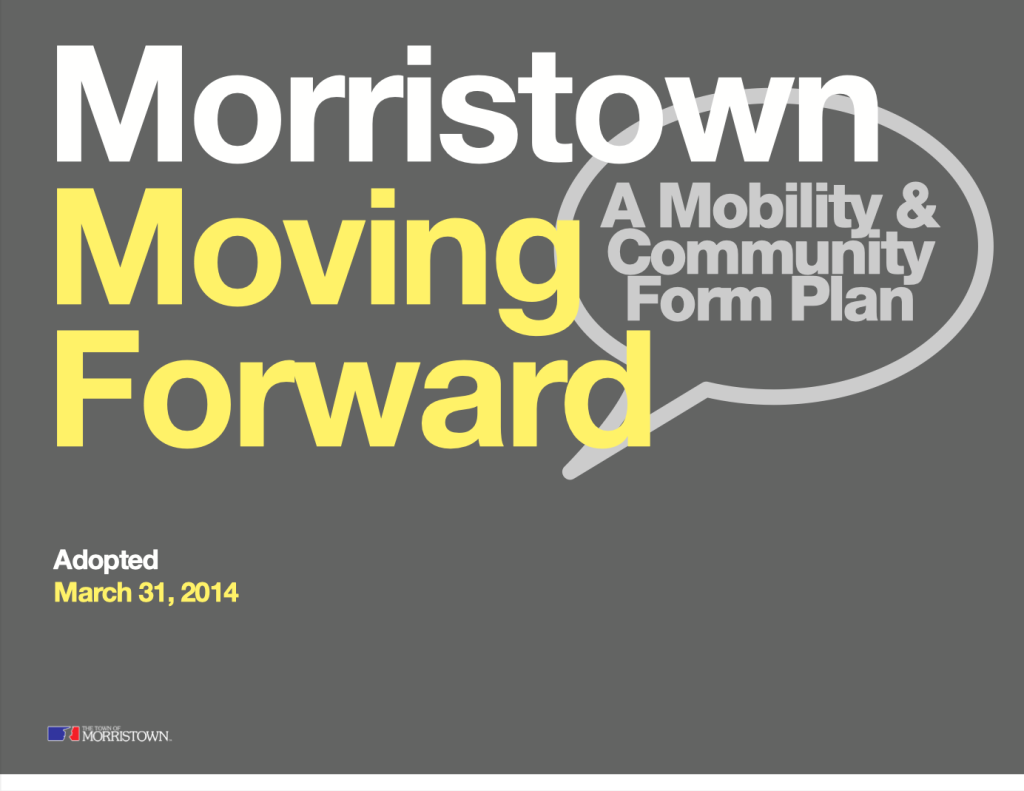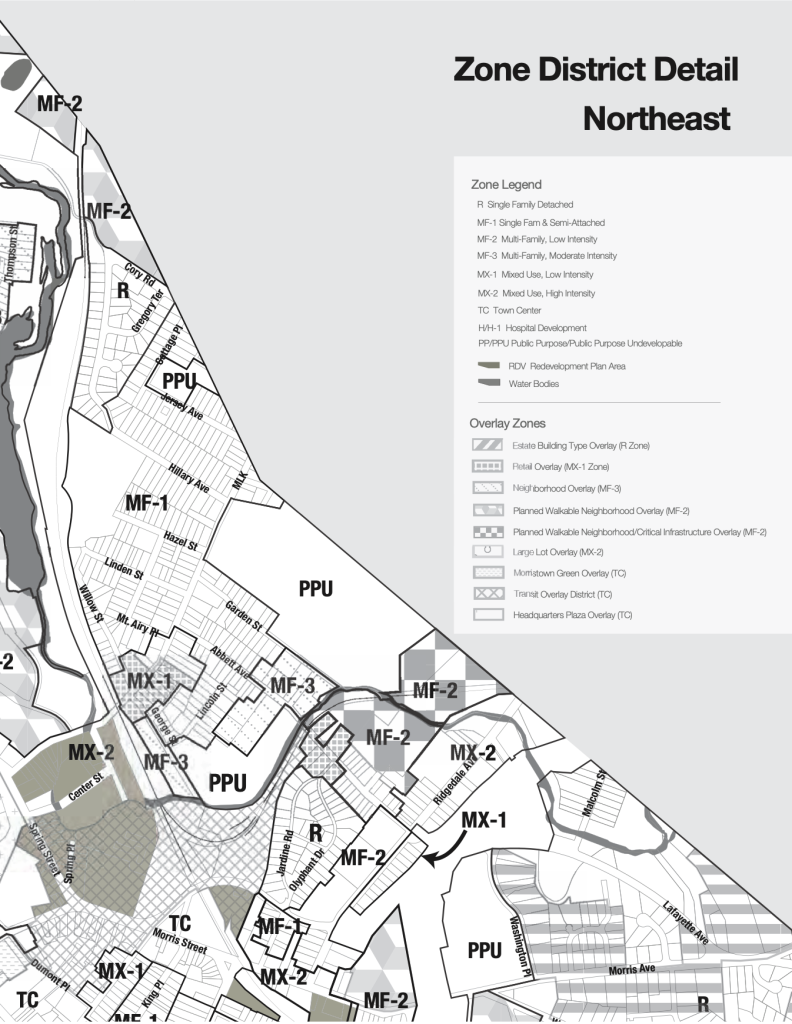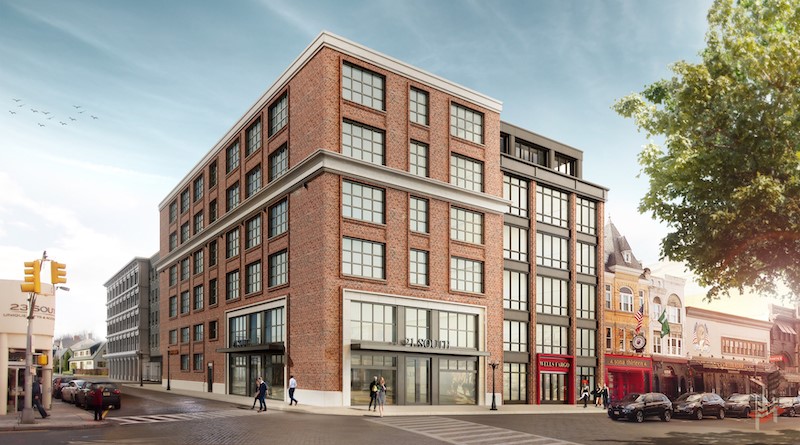Morristown is home to nearly 20,000 residents, and, in non-pandemic times, the workplace of nearly 13,000 downtown office personnel. The town’s densely-developed center, with buildings three to six stories on average, provides residents and workers an established retail environment and a lively restaurant and nightlife scene.
Since first designated as a New Jersey Transit Village in 1999, the municipality has encouraged the building of a denser, more walkable urban area surrounding its station. The town has emerged as a regional leader in smart growth planning, solidifying and adding on to its walkable urban center with a spate of new mixed-use developments.

While pursuing its Transit Village goals, Morristown faces the specific challenge of connecting its historic central business district with the NJ TRANSIT station. A little more than a quarter mile walk through a lower density section of the municipality separates Morristown Green and the train station.
Several efforts in the past two decades have addressed this challenge. In 2006, NJ TRANSIT engaged in its first joint development project at the Morristown train station, transforming a parking lot into a mixed-use residential project. The agency sold land adjacent to the station and replaced the lost parking spaces with a parking garage beneath the apartment complex.
In 2014, Morristown created its decennial Master Plan, a required document under the New Jersey Municipal Land Use Law (MLUL). Phil Abramson, Board Planner, helped to create both Morristown’s most recent comprehensive plan and the accompanying land use ordinance. The work undertaken to create “the master plan was incredibly engaged and inclusive and I felt like that document was a mandate [for the land use ordinance],” Abramson said.

The master plan acknowledges the relationship between transportation facilities and land use changes, seeking to integrate the two. Typically, comprehensive plans have disparate sections, including one on “land use” and another on “circulation” that looks at traffic; Morristown’s plan unites the two, encouraging transit-oriented development and lively streetscapes, as well as active transportation and transit use. The Morristown Moving Forward, A Mobility and Community Form Plan is the policy document, and the Morristown Land Use Ordinance is the technical codification of these expressed goals.
These principles are exemplified through the Town Core (TC) zoning designation, which stretches across the central business district to the train station. The Town has designated certain portions of this area as a Transit Overlay District, and allocated development bonuses, such as a Floor Area Ratio (FAR) bonus from 2.5 to 4.0, to allow for more intensified density.
Since Morristown adopted the Master Plan and Land Use Ordinance (2014 and 2018, respectively), a new wave of TODs have been proposed or built in the Town Core zone and adjacent areas. Near the train station, M Station East, a large office and retail project recently broke ground, and will host professional services firm Deloitte. This development will replace a low-rise shopping center surrounded by parking, and will be directly adjacent to NJ TRANSIT’s joint development TOD project, Sofi at Morristown. “I would say that, over the years, one of Morristown’s real strengths has been (pandemic notwithstanding), becoming a place where jobs were moving to rather than moving out of an ‘urban center,’” Abramson said.

Even with a partial pivot to virtual work, Abramson sees the municipality as an ideal “Zoom Town,” a place where people can take the hour and twenty-minute NJ TRANSIT ride to New York City a few times a week, but also can stay and enjoy the existing urban amenities most of the time.
Active and proposed redevelopment projects are clustered around the central business district and the train station. A few parcels down from M Station, a 7-Eleven will replace an Exxon Mobil gas station—though to meet Morristown’s design ordinance, this convenience store will be a brick building with a small setback from the sidewalk.
In the Town Core area, located a short walk from the train station, other densifying developments are under construction. For example, 45 Market Street by the Hampshire Cos., a 54-unit flatiron-style building with housing and a new hotel recently reactivated an idle alley in Morristown’s core. A few blocks away, the site of a proposed 39-unit, four-story structure from developers South Street Morristown Holdings LLC lies within a nine-minute walk of the train station.
In 2019, the Town received a $200,000 Transit Village Initiative grant for pedestrian improvements in the train station area, aimed at increasing safety and walkability. Morristown anticipates beginning construction on such improvements in the fall. Another award, a $1 million Transportation Alternatives Program (TAP) grant from 2016, will create active transportation connectivity between downtown Morristown and the train station. The Martin Luther King Jr. Promenade Transit Connection was recently approved by the Town for preliminary engineering, the scoping of which will commence by the end of the summer. Additionally, the M Station East development will complement these grants with pedestrian improvements, all working to increase the ease of active transportation in the area.
As a Transit Village, Morristown is managing booming growth by establishing a planning foundation to ensure a sustainable, human-scale urban form. “Transit Villages are interesting laboratories to test new policies,” said Abramson. “They’re a good place to try new things.”

